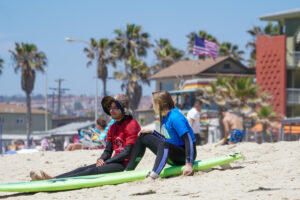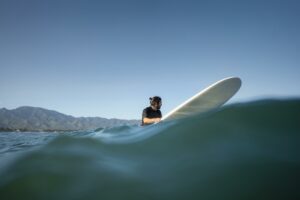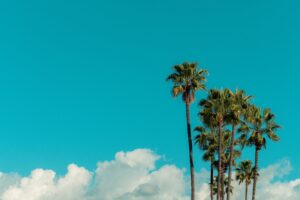It has been said that some places in this world are just strange–not necessarily because of the strange people that congregate there, or the strange events that transpire. It’s like the land itself is a magnet for everything weird, collecting eccentricities and showcasing them for passersby to gawk and wonder.
Black’s Beach is one of those places. At one time, it could be called a hidden cove, resting beneath impassable sea cliffs, but once the word got out that Black’s was arguably the best place to surf in San Diego, people started making their way down the cliffs, taking whatever path was available to them, regardless of how difficult it was.
The area surrounding Black’s Beach is just as menacing as it is weird. The waves there are not meant for beginners. They’re too powerful and far too tall for anyone without years of experience under their belt. Many swimmers have drowned in the legendary tide, and the cliffs have taken their fair share of lives as well.
Still, there’s something alluring about the churning seas and golden sand. That’s why those in the know try to avoid talking about the beach. They don’t want to spoil the quiet tranquility of the place, and while it does get crowded when the surf is up, the secretive nature of those who frequent it has thinned the crowd a little, granting visitors a few moments of solace.
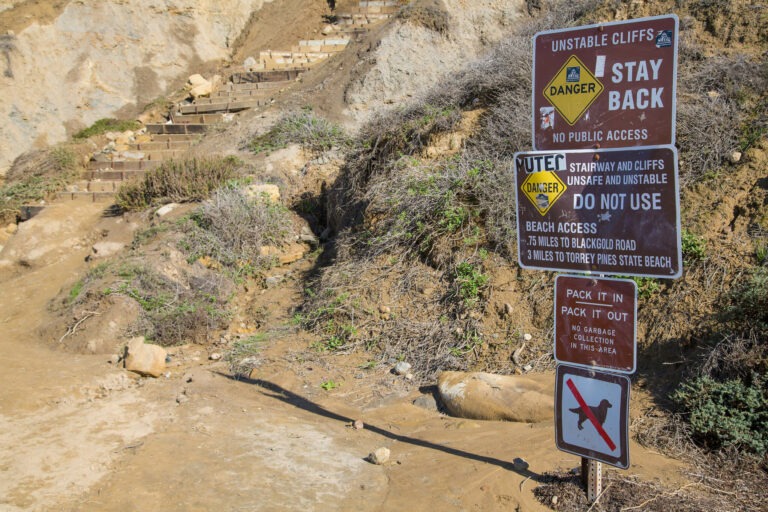
Tony Webster / Flickr
The Trail to Black’s Beach
Black’s Beach might be a favorite with the surfing crowd, but it’s not easy to get to. There are multiple routes, each with its pros and cons, and not all of them are reliable or safe.
Torrey Pines Gliderport Trail
The Torrey Pines Gliderport Trail is the most popular way to get to the beach. Hikers consider it to be an intermediate path, and they’re wise to say so. The city has made it very clear–with multiple signs, bulletins, news reports, posts, and every other method of communication imaginable–that the trail is not safe. It’s steep and unstable. It travels along sandstone cliffs, which are known to crumble and crack over time. Unfortunately, as the erosion progresses, the problem has only gotten worse, and people keep coming anyway, unfazed by the city’s barrage of warnings.
La Jolla Shores or Torrey Pines State Beach
When the tide is low, Black’s Beach is accessible from Torrey Pines State Beach from the north or La Jolla Shores from the south. But if you plan on staying there a while, don’t come back the way you came. The tide is notorious for sweeping up people who think it’s safe to wade in.
Salk Canyon Road
Students at the university have access to a paved path at the intersection of La Jolla Farms and Black Gold Road. It’s still a half-mile hike, and everyone else has to find another way down.
Ho Chi Minh Trail
The Ho Chi Minh trail got its name from a group of surfers during the Vietnam War. It refers to a notorious military supply route in North Vietnam. The trail itself is a series of narrow passages carved out of bone white sandstone called slot canyons. It’s just as steep and dangerous as the Gliderport Trail. Hikers are required to cross a narrow plank and use a rope to get down to the beach.
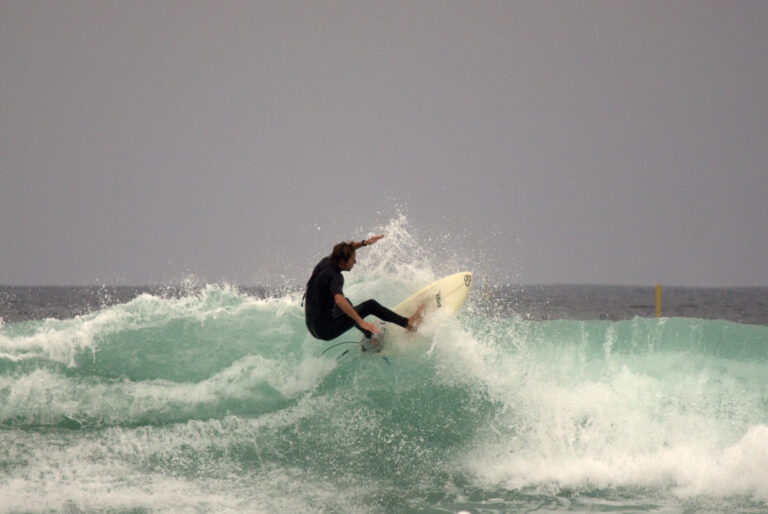
Elvin Lucero / Flickr
The Black’s Beach Wave
The water at Black’s Beach is known for two things: the riptides and the surf break, both of which are known to catch people by surprise. Imagine a churning beast, tearing at the sand, frothy peaks like foggy glass curling towards the shore, some as high as 10 feet tall. It is wild.
Black’s beach gets its characteristic high surf from the underwater Scripp’s Canyon, a mile-long gorge filled with sea life. It catches the water, causing it to break right and left in perfect formation.
The wave is consistently surfable, something that most San Diego beaches cannot live up to. It’s clean, and when there’s a swell, watch out. Everyone dumb enough to paddle out before they’ve earned their stripes is going to be underwater, wishing they could conquer that surf.
This is an expert’s only tide, built for those born with boards in their hands. The rest should stay onshore and watch.
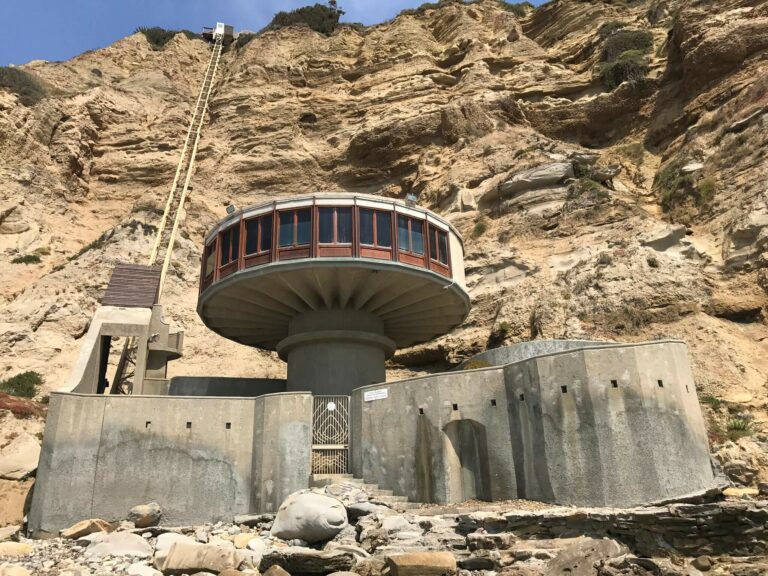
Raquel Baranow / Flickr
The Mushroom House
On the southern edge of Black’s Beach, you’ll find an abandoned architectural oddity known to locals as the Mushroom House. Its real name is Bell’s Pavilion, and it was built in 1968 by the architect Dale Naegle as a guest retreat for the heir to General Mill’s, Sam Bell.
The strange design was meant to withstand earthquakes, waves, and rock slides, all of which are a problem in the area. The building is only accessible through a vertical tramway, which traveled the full 300 feet up and down the cliffs.
Nobody knows who owns it now, just an unnamed philanthropist from San Diego, but it’s become an icon in the city and a must-see if you plan on visiting Black’s Beach.
Disclaimer
There’s one more thing that Black’s Beach is known for, cementing the odd and eccentric flair that has come to characterize this strange strip of sand. The northern portion of the beach is dominated by nudists. The city has mostly looked aside because it is considered a remote location, even though it is against the law. They’ve even drawn a literal line in the sand between the surfing section and the clothing optional section, further legitimizing the practice. The nudists don’t really hurt anyone, but it can get a bit awkward.
Calmer Waters
What’s great about Black’s Beach is its proximity to La Jolla Shores, where the water is a bit calmer. Swimming and amateur surfing are possible there. You’ll find surf instructors, children playing, and people lying out in the sand. It’s a much more laid back environment. If you’re not an expert surfer, the best way to experience Black’s Beach would be to take a stroll, see the Mushroom House, then head back to La Jolla for a more traditional day in the water.


